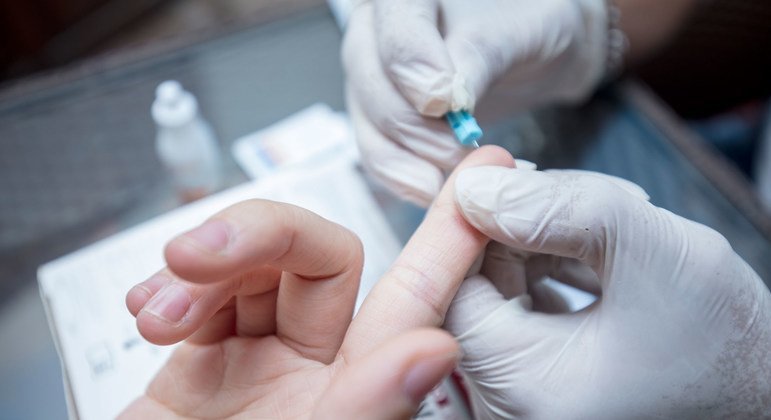Latin America and the Caribbean received 142,794 million dollars in direct foreign investment last year, 40.7% more than in 2020, but this growth was not enough to reach pre-pandemic levels, according to a new report. of the Economic Commission for the region published this Tuesday.
Although the reactivation of investments fell on all subregions, the four countries that received the largest sums were Brazil (33% of the total), Mexico (23%), Chile (11%) and Colombia (7%).
The most dynamic sectors were services and those dedicated to natural resources, while those that aroused the greatest interest in the production of new projects were telecommunications and renewable energies. The European Union and the United States were the main investors during 2021.
However, the announcements of new investment projects did not pick up in 2021 and are at their lowest point since 2007 (51.5 billion dollars).
Globally, foreign direct investment amounts increased by 64% in 2021, reaching approximately $1.6 trillion. However, Latin America and the Caribbean lost share as a destination for global investment, representing 9% of the total, one of the lowest percentages in the last ten years and far from the 14% registered in 2013 and 2014.
The report also highlights that Latin America and the Caribbean, with 660 million inhabitants, is projected to be the market with the highest global growth in sales of pharmaceutical products between 2021 and 2026.
Warning earlier this year that the AIDS response is in jeopardy with rising new infections and continuing deaths in many parts of the world, a new report from UNAIDS shows that inequalities are the hidden cause of this situation.
The study analyzes the impact of gender inequality on the AIDS response, the differences faced by key population groups, the disparities between children and adults, and highlights that worsening financial constraints make it difficult to treat those discrepancies.
The effects of gender inequality are especially pronounced in sub-Saharan Africa, where women accounted for 63% of new HIV infections in 2021. Adolescent girls and young women are three times more likely to contract HIV in that area times higher than their male counterparts.
The report demonstrates that progress is possible to close these gaps, and highlights areas where the AIDS response has already made notable progress. For example, three counties in Kenya achieved higher HIV treatment coverage among female sex workers than among the general population of women aged 15-49.

A new report from the World Meteorological Organization on The state of global water resources indicates that in 2021 large areas of the planet suffered droughts above normal conditions, “a year in which the distribution of rainfall was influenced by climate change and a La Niña episode.”
The study offers an overview of the flow of rivers, as well as the main floods and droughts. It reports on hotspots for changes in freshwater storage and highlights the crucial role and vulnerability of the cryosphere, the part of the Earth’s surface where water is in a solid state.
The analysis indicates that 3.6 billion people currently face inadequate access to water for at least one month of the year and this number is expected to rise to more than 5 billion by 2050.
The Secretary General of the Organization, Professor Petteri Taalas stressed that “there is insufficient knowledge about the changes in the distribution, quantity and quality of freshwater resources”, and that the report seeks to “rectify this deficiency ( …) and offer a concise view of water availability in different parts of the world”.
Taalas explained that the data will be used to guide “investments in climate-related adaptation and mitigation activities, as well as the United Nations campaign focused on providing universal access over the next five years to early warnings of hazards such as floods and droughts.
The UN applauds the shipment of Russian fertilizers to avoid losing crops in Africa

The United Nations expresses its satisfaction with the donation of 260,000 metric tons of Russian fertilizers stored in European ports and warehouses, which will serve to alleviate humanitarian needs and prevent crop failure in Africa, where it is currently the planting season.
The first shipment of 20,000 metric tons will leave the Netherlands from today for Malawi via Mozambique. The ship chartered by the World Food Program It is the first of a series of shipments of fertilizers destined for other countries on the African continent that will take place in the coming months.
Fertilizers play a key role in food systems, since 50% of the world population depends on agricultural products that are produced with the help of mineral fertilizers. Since 2019, fertilizer prices have increased by 250%, producing a “fertilizer crisis” that is driving farmers out of production, especially small farmers in the developing world.
Shortages of nitrogenous fertilizers this year could cause a loss of production next year of 66 million tons of staple crops (corn, rice and wheat), enough to feed 3.6 billion people, almost half of humanity, for a month.
The General secretaryAntónio Guterres, indicated that the reactivation of fertilizer markets represents “a fundamental step to guarantee world food security by 2023” and that “the United Nations will continue to do everything possible, with all parties, to achieve this objective”.








![[Img #73861]](https://thelatestnews.world/wp-content/uploads/2024/09/Dark-matter-near-Mars-150x150.jpg)





